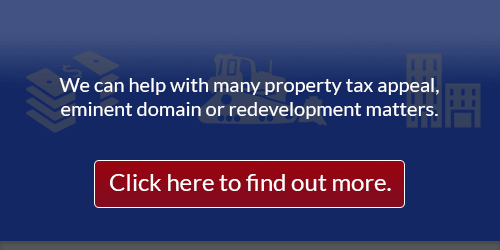Which (Valuation Method) Do You Choose?

In a January 11 decision, the New Jersey Tax Court affirmed taxpayer Ortiz’s property tax assessment for years 2013, 2014, 2015 and 2016. Ortiz challenged the assessment of their 2-story colonial-style, single family residence situated on .91 acre of land with a gross living area of approximately 10,346 square feet with an attached accessory dwelling unit. The home was constructed in 2011 by taxpayers for the personal use of Ortiz’s family.
The court acknowledged that Ortiz met the “cogent evidence” burden of proof standard necessary in challenging a property tax assessment, Pantasote Co. v. Passaic City, 100 N.J. 408, 413 (1985). This meant the presumption of validity was overcome but the court must then examine the evidence from both parties to “conclude the matter based on a fair preponderance of the evidence.” Ford Motor Co. v. Edison Twp., 127 N.J. 290, 312 (1992). Moreover, the property must be valued at its “highest and best use” which considers whether the use is: 1) legally permissible, 2) physically possible, 3) financially feasible and 4) maximally productive. Clemente v. South Hackensack Twp., 27 N.J. Tax 255, 2667-269 (Tax 2013). Here, the court accepted the highest and best use as a single-family residence.
Next, the court determined how to value the property. There are three traditional ways to value property: 1) cost approach, 2) comparable sales or 3) capitalization of income. Ortiz’s expert utilized the cost approach and provided seven residential sales he adjusted to account for differences in location and size and an added value for site improvements. The cost approach is often the only reliable method of valuation of “special purpose or unique structures for which there is no market.” Dwormna v. Tinton Falls Borough, 1 N.J. Tax 445, 452 (Tax 1980). The expert said that subject property was an “over-improvement,” one for which there exists no comparable properties on the market. He also calculated a depreciated replacement cost for the residence.
The court ultimately rejected the expert’s data and calculations noting it was presented with “…inadequate data and supporting analysis for…depreciation rates, site improvements and soft costs” as the cost approach is not the favored approach for discerning the market value of single-family residential property. Moreover, the generally accepted approach to value a single-residence home is the comparable sales approach. The cost approach is only useful if a property has “site improvements newly constructed, distinctly opulent, contain unique or special features, or other amenities that are not generally present in other properties.” Little Ferry Borough v. Vecchiotti, 7 N.J. Tax. At 407, aff’d, 180 N.J. Super. 366 (1981). The court concluded subject property was not a special purpose structure, only a newly constructed single-residence home.
Here, the court found there was a market for newly constructed single-residence homes in Rahway. Moreover, although the residence may have certain distinct features not customary to single-family residences in Rahway (i.e. elevator or handicap accessible bathroom), the mere presence only makes the property more suitable to Ortiz’s use and does not render it a special purpose property. Accordingly, as the expert utilized the incorrect valuation method, insufficient credible evidence was provided and Ortiz failed to prove, by a preponderance of evidence, that their assessment exceeded its market value.
A copy of Rafael & Allision J. Ortiz v. Rahway City can be found here.







